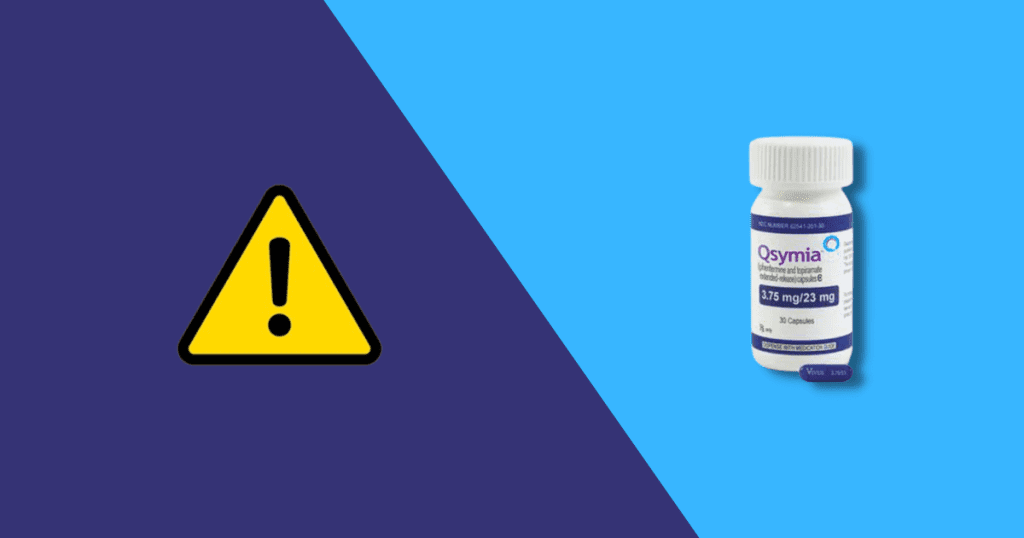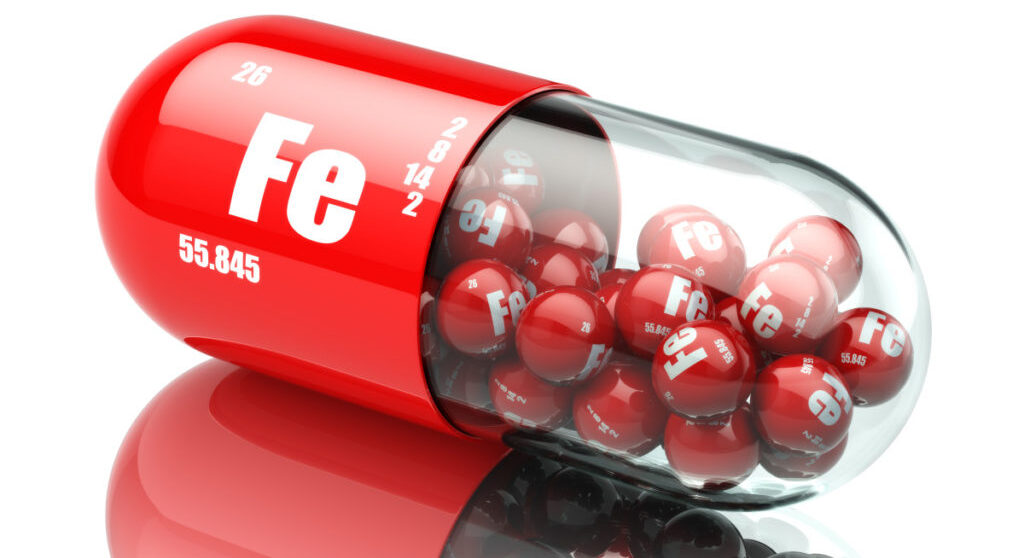Qsymia Side Effects
Qsymia side effectsIntroduction: Qsymia Side effectsQsymia, a prescription weight-loss medication, may cause a range of potential side effects. Common side effects include dizziness, constipation, and altered taste sensations. More rare but serious side effects can include mood changes, heart palpitations, and vision changes. Patients need to report any negative side effects to the FDA by calling 1-800-FDA-1088 or visiting their website to fill out a voluntary reporting form.If patients experience any of these side effects, they should seek immediate medical attention for serious side effects such as chest pain, difficulty breathing, or sudden vision changes. For less severe side effects, patients should speak with their healthcare professional about managing these symptoms. This can include adjusting the dosage, changing the timing of medication, or exploring alternative treatment options.Patients should always consult their healthcare professional before making any changes to their medication regimen. It’s important to prioritize safety and well-being by addressing any potential side effects promptly and appropriately.How to use Qsymia1. Start by taking Qsymia as prescribed by your doctor. Typically, this involves taking one capsule in the morning for the first two weeks.2. Swallow the capsules whole, without chewing, and with a glass of water. Do not crush, chew, or open the capsules.3. After the initial two weeks, follow your doctor’s instructions for gradually increasing the dosage. This process, known as dosage titration, helps your body adjust to the medication and reduces the risk of side effects.4. It’s important to take Qsymia in the morning, with or without food. However, it’s crucial to drink plenty of fluids throughout the day to prevent the formation of kidney stones.5. Avoid exceeding the prescribed dosage or using Qsymia for longer than recommended, as this can lead to addiction.6. If you experience withdrawal symptoms, such as depression, mood swings, or fatigue, do not suddenly stop taking Qsymia. Consult your doctor to gradually reduce the dosage and safely discontinue the medication.Following these guidelines can help you effectively manage your weight with Qsymia while minimizing the risk of side effects, addiction, and withdrawal symptoms. Always consult your doctor if you have any concerns or questions about your medication.General Side EffectsWhen taking medications or undergoing certain treatments, it is common to experience general side effects. These side effects are not specific to any particular condition or medication and can vary widely from person to person. It is important to be aware of these general side effects and to communicate with your healthcare provider if you experience any symptoms. Some of the most common general side effects include nausea, dizziness, headache, fatigue, and digestive issues. It is also important to remember that some general side effects may be temporary and subside as your body adjusts to the medication or treatment. However, if you experience severe or persistent side effects, it is crucial to seek medical attention. Always follow the recommended guidelines for taking medications and seek advice from your healthcare provider if you have any concerns about potential side effects.# WarningsBefore using Qsymia (Phentermine And Topiramate). Qsymia should not be used if you are pregnant, as it can cause harm to the fetus. Additionally, it is important to use effective contraception while taking Qsymia to prevent pregnancy.There are several potential drug interactions with Qsymia, including certain antidepressants, antiepileptic drugs, and other weight loss medications. It is important to discuss all medications you are taking with your doctor to ensure there are no potential interactions with Qsymia.Regular monitoring for side effects is crucial when taking Qsymia. Common side effects include dizziness, insomnia, constipation, and dry mouth. Monitoring for more serious side effects, such as increased heart rate or changes in mood or behavior, is also important.The FDA has established a Risk Evaluation and Mitigation Strategy (REMS) Program for Qsymia. This program is designed to ensure the safe use of Qsymia and includes requirements for healthcare providers and pharmacies. It is important to follow the requirements of the Qsymia REMS Program to minimize the risks associated with Qsymia.In conclusion, it is important to be aware of the warnings associated with Qsymia, including potential drug interactions, pregnancy risks, and the need for regular monitoring of side effects. Following the requirements of the Qsymia REMS Program is also crucial for the safe use of this medication.# PrecautionsThe following precautions should be taken when using this medication. Firstly, it is important to attend regular check-ups with your healthcare provider to monitor your progress and to check for any potential side effects. Additionally, if you are of childbearing age, it is crucial to undergo regular pregnancy tests before and during treatment as this medication can be harmful to a developing baby.It is also important not to abruptly stop taking the medication without consulting a healthcare professional as this can lead to withdrawal symptoms and a potential worsening of the condition being treated. Furthermore, precautions should be taken in hot weather as this medication can increase the risk of heat-related illnesses.It is important to be alert for symptoms of serious skin reactions such as a rash, blistering, or peeling of the skin, as these can be signs of a potentially life-threatening reaction. If any of these symptoms occur, it is important to seek medical attention immediately.By following these precautions and closely monitoring your health, you can safely and effectively use this medication to manage your condition.# InteractionsQSYMIA, a combination of phentermine and topiramate, is associated with several clinically significant drug interactions. It may interact with MAOIs, causing possible hypertensive crises and serotonin syndrome. When used with oral contraceptives, QSYMIA can reduce the efficacy of the contraceptive and lead to unintended pregnancy. Additionally, CNS depressants such as alcohol or benzodiazepines may potentiate the central nervous system effects of QSYMIA.Non-potassium-sparing diuretics can increase the risk of metabolic acidosis when used with QSYMIA. When combined with antiepileptic drugs, there is a potential for increased central nervous system-related adverse effects. Carbonic anhydrase inhibitors, such as acetazolamide, may increase the risk of metabolic acidosis when used with QSYMIA.QSYMIA has the potential for abuse and physical dependence, especially with the
Saxenda Side effects
Saxenda Side effectsIntroduction to Saxenda Side EffectsSaxenda® is a prescription medication used for weight management in adults and comes with potential side effects. Allergic reactions to Saxenda® may result in symptoms such as itching, rash, and difficulty breathing. Changes in mood or behavior, including depression and suicidal thoughts, can also occur. Patients should be aware of thyroid tumor symptoms, which may include swelling in the neck, difficulty swallowing, and hoarseness. Gallbladder problems, pancreatitis, low blood sugar, and kidney problems are also potential side effects associated with Saxenda® use.In addition to these serious side effects, more common side effects may include nausea, vomiting, increased heart rate, diarrhea, and fatigue. It is important for patients to discuss any side effects with their healthcare provider and to seek medical attention if they experience any concerning symptoms. Saxenda® should be used carefully and as directed by a healthcare professional to minimize the risk of potential side effects.The most common side effects of Saxenda®The most common side effects of Saxenda® include nausea, vomiting, diarrhea, constipation, headache, low blood sugar, and decreased appetite. To manage these side effects, there are several strategies that can be employed.For nausea, it can be helpful to get fresh air, sip a cold drink or peppermint tea, and eat smaller, more frequent meals. It is also recommended to avoid strong-smelling, greasy, and fried foods, as these can exacerbate nausea symptoms. Additionally, staying hydrated and getting plenty of rest can also help alleviate nausea.For vomiting and diarrhea, it is important to stay hydrated and replace lost fluids with water or electrolyte drinks. Eating bland, easy-to-digest foods such as rice, bananas, and toast can also help.If experiencing symptoms of low blood sugar, consuming a small amount of sugar, such as a piece of candy or fruit juice, can help raise blood sugar levels.If these side effects persist or become severe, it is important to contact a healthcare professional for further guidance. By using these strategies to manage the common side effects of Saxenda®, individuals can continue their treatment while minimizing discomfort.What is the most important information I should know about Saxenda®?Saxenda® is a prescription medication used for weight management in adults with obesity or overweight and weight-related medical conditions. It is important to be aware of the potential risk of thyroid tumors while taking Saxenda. In studies, some rats and mice developed thyroid tumors, but it is not known if Saxenda causes these tumors in humans.Saxenda should be stored in the refrigerator at a temperature between 36°F to 46°F (2°C to 8°C). After first use, it can be stored at room temperature or in the refrigerator for up to 30 days. It should be kept away from light and heat.Some important questions to ask your doctor before starting Saxenda include whether you have any medical conditions that may prevent your doctor from prescribing Saxenda, such as a history of pancreatitis, a thyroid tumor, or multiple endocrine neoplasia syndrome type 2 (MEN 2), as Saxenda may not be suitable for individuals with these conditions. It is important to discuss any other medications or supplements you are taking and to inform your doctor if you become pregnant or are breastfeeding while using Saxenda. Always follow your doctor’s instructions and the medication guide provided with Saxenda.How should I use Saxenda®?Saxenda® is an FDA-approved prescription medicine that, when used in combination with a reduced-calorie diet and increased physical activity, can help with weight management. It is important to understand how to properly use Saxenda® in order to achieve the best results and minimize potential side effects.Saxenda® comes in a pre-filled, multi-dose pen that must be injected under the skin once a day at any time of day, with or without food. It is important to follow the dosing instructions provided by your healthcare provider and not to adjust the dose without consulting them first. Saxenda® should be started at a low dose and gradually increased to minimize potential gastrointestinal side effects. It is essential to continue making healthy lifestyle changes, such as following a reduced-calorie diet and increasing physical activity while using Saxenda®. Regularly monitoring your weight, diet, and physical activity can also help track your progress and make necessary adjustments to your weight management plan. It is important to communicate any concerns or changes in health to your healthcare provider while using Saxenda®.# DosingSchedule for Saxenda:The recommended dosing schedule for Saxenda starts with a dosage of 0.6 mg per day for the first week. The dosage is then increased by 0.6 mg each week until the 3 mg dose is reached, as prescribed by a healthcare professional. This gradual increase in dosage is designed to minimize gastrointestinal side effects and help the body adjust to the medication.For teens using Saxenda, they may be instructed to reduce their dose to 2.4 mg daily if the maximum dose of 3 mg is not well tolerated. It is important for teens to carefully follow the dosing instructions provided by their healthcare provider.It is crucial to adhere to the prescribed dosing schedule and not to adjust the dosage without consulting a healthcare professional. Any changes in dosage should be discussed with a doctor to ensure the safe and effective use of Saxenda.In summary, the dosing schedule for Saxenda starts with 0.6 mg per day and increases weekly until the 3 mg dose is reached. Teens may be advised to reduce their dose if needed, and the schedule is designed to minimize gastrointestinal side effects.# Missed DoseIf you miss a dose of Saxenda, take the missed dose as soon as you remember, unless it is already time for your next scheduled dose. In that case, skip the missed dose and continue with your regular dosing schedule. Do not take an extra dose or increase your daily dose to make up for the missed dose. If you miss multiple doses, contact your healthcare provider for further guidance.It is important not to alter your dosage without consulting your healthcare provider, as this can increase the risk of side effects. If you miss
NAD+ IV Therapy
NAD IV therapyUltimate Guide to NAD IV therapyThe Science Behind NAD+NAD+ (nicotinamide adenine dinucleotide) is a coenzyme found in all living cells and plays a crucial role in various biological processes. One of the potential benefits of NAD+ is its impact on anti-aging. NAD+ is essential for healthy mitochondrial function, which is responsible for producing energy in cells. As we age, our mitochondrial function declines, leading to reduced energy production and increased oxidative stress. NAD+ supports mitochondrial health, helping to maintain energy production and reduce oxidative damage.NAD+ also plays a key role in activating sirtuins, a group of proteins that regulate cellular health and longevity. Sirtuins are involved in processes such as DNA repair, inflammation control, and metabolism regulation, all of which are important for anti-aging effects.Unfortunately, NAD+ production declines with age and can also be depleted by poor lifestyle choices such as stress, lack of exercise, and unhealthy diet. This decline in NAD+ levels can contribute to the aging process. NAD+ IV therapy is a method to supplement NAD+ levels in the body, potentially restoring mitochondrial function and sirtuin activity. By supporting these key mechanisms, NAD+ supplementation may have the potential to slow down the aging process and promote overall health and longevity.Why NAD+ Matters?NAD+ (nicotinamide adenine dinucleotide) is a crucial coenzyme that plays a vital role in various bodily functions, including energy metabolism, DNA repair, and gene expression. As we age, the production of NAD+ declines, leading to symptoms of aging such as decreased energy levels, reduced cognitive function, and impaired cellular repair. This decline in NAD+ levels has been linked to age-related diseases such as diabetes, cardiovascular disease, and neurodegenerative disorders.NAD+ therapy can help maximize overall health and stay a step ahead of aging by replenishing NAD+ levels in the body. By receiving NAD+ supplementation therapy, individuals can potentially slow down the aging process, improve energy levels, enhance cognitive function, and promote overall well-being. Additionally, NAD+ therapy has been shown to have various benefits, including improved mitochondrial function, enhanced DNA repair, and reduced inflammation. This presents new therapeutic opportunities for addressing age-related conditions and promoting longevity.In conclusion, NAD+ is essential for maintaining optimal bodily functions, and its decline with age can lead to various symptoms of aging and age-related diseases. NAD+ therapy has the potential to provide numerous health benefits and may offer new opportunities for promoting healthy aging and longevity.Health Benefits of NAD+ IV TreatmentsNAD+ IV therapy has been touted as a promising treatment for combating various health issues and promoting overall wellness. This therapy has shown potential in slowing cognitive decline and promoting healthy brain function by supporting neuronal health and improving cognitive function. Additionally, NAD+ IV treatments have been linked to fighting chronic fatigue by increasing energy levels and reducing internal inflammation, leading to improved overall energy and vitality.Furthermore, NAD+ IV therapy has been shown to boost metabolism, regenerate cells, and slow down the aging process. By promoting cellular regeneration, NAD+ IV treatments can potentially contribute to healthier and more youthful-looking skin, among other anti-aging benefits.Specific benefits that individuals can expect to see from NAD+ IV therapy include improved cognitive function, increased energy levels, reduced inflammation, enhanced metabolism, and potential anti-aging effects. Overall, NAD+ IV therapy has the potential to significantly improve overall health and well-being.In conclusion, NAD+ IV treatments offer a range of health benefits, including cognitive support, increased energy, and potential anti-aging effects, making it a promising option for those looking to improve their overall health and vitality.COGNITIVE FUNCTIONNAD+ therapy can significantly improve cognitive function through various mechanisms. By enhancing brain regeneration, NAD+ supports the repair and growth of brain cells, leading to improved cognitive abilities. Additionally, NAD+ therapy boosts focus and concentration by promoting the production of neurotransmitters that are essential for cognitive processes.NAD IV therapy has been shown to increase mental clarity and improve memory, as it helps to repair DNA and protect the brain from oxidative damage. This can be particularly beneficial in reducing the risk of developing neurodegenerative diseases such as Alzheimer’s and Parkinson’s.Cellular energy is crucial for optimal brain function, and NAD+ therapy plays a key role in supporting this. NAD+ is essential for the production of ATP, the molecule that provides energy for cellular processes, including those in the brain. Furthermore, NAD+ is involved in maintaining optimal oxygen levels in cells, which is crucial for brain function.In conclusion, NAD+ therapy can have significant positive impacts on cognitive function through brain regeneration, mental clarity, memory improvement, and protection from neurodegenerative diseases, ultimately contributing to overall brain health and function.STRENGTHENED IMMUNITYImmune system support therapies are vital in maintaining a healthy immune system, which is essential for protecting the body from infections and diseases. NAD+ plays a critical role in boosting immunity by aiding in cellular repair and energy production. Antioxidants like vitamin C and minerals like zinc also play a key role in supporting the immune system by reducing oxidative stress and promoting white blood cell function.These immune system support therapies can restore balance in the body by reducing inflammation and promoting overall wellness. Vitamin C and zinc, in particular, have been shown to reduce the severity and duration of respiratory infections. NAD+ therapy can also strengthen immunity by improving cellular function and repairing DNA damage, ultimately protecting the body from infections and autoimmune diseases.Overall, immune system support therapies, including the use of NAD+ and antioxidants like vitamin C and zinc, are essential for maintaining a healthy immune system and protecting the body from various health threats. By strengthening immunity, these therapies can provide long-term benefits for overall health and wellness.ENERGY BOOSTNAD+ therapy boosts energy levels and combats fatigue by increasing ATP production, the primary energy currency of the cell. NAD+ plays a crucial role in the production of ATP through the process of cellular respiration, helping to generate more energy for the body. Additionally, NAD+ therapy supports various biological processes including DNA repair, cellular signaling, and metabolism, which contribute to overall energy levels.This therapy is commonly used to alleviate symptoms of Chronic Fatigue Syndrome by replenishing
Lipostat IV Therapy
Lipostat IV TherapyUltimate Guide to Lipostat IV TherapyLipostat IV Therapy is a highly effective treatment designed to promote weight loss, increase energy levels, and lower cholesterol. This therapy involves the administration of lipotropic compounds and essential nutrients through intravenous injections, allowing for faster absorption and better results.The components of Lipostat or referred to as Lipo C IV Therapy are carefully blended to maximize its benefits. These injections typically include a combination of amino acids, B vitamins such as B12 and B6, as well as methionine, inositol, and choline. These compounds work synergistically to support liver function, enhance metabolism, and aid in the breakdown and elimination of fat. The amino acids included in the blend also help to promote muscle growth and improve exercise performance, contributing to the overall weight loss and energy-boosting effects of the therapy.Through regular Lipostat IV Therapy sessions, individuals can experience significant improvements in their weight management efforts, enjoy a noticeable increase in energy levels, and effectively lower cholesterol levels. This treatment is safe, convenient, and offers a natural approach to achieving a healthier and more balanced lifestyle. With its proven track record, Lipostat IV Therapy is a popular choice for those seeking to enhance their overall well-being. What is Lipostat?Lipostat is a specialized injection containing a unique blend of B12, peptides, and other essential nutrients designed to support metabolic function and energy production. This combination is formulated to target weight loss, cholesterol levels, and overall well-being.Lipostat is administered through an injection, making it an efficient and convenient method for delivering its powerful components directly into the body. Eligible individuals who may benefit from Lipostat include those struggling with weight management, low energy levels, brain fog, and high cholesterol.The specific benefits of Lipostat Plus include supporting a healthy metabolism, promoting weight loss, and aiding in lowering cholesterol levels. Additionally, the B12 and peptide components are known to enhance energy levels, improve brain function, and contribute to overall well-being. By helping to regulate metabolism and promote better energy output, Lipostat offers a comprehensive approach to supporting weight loss and cholesterol management.Who can get Lipostat?Lipostat is designed for individuals who are 18 years of age or older and have a body mass index (BMI) of 30 or higher, or a BMI of 27 or higher with at least one weight-related medical condition, such as high blood pressure, diabetes, or high cholesterol. However, individuals between the ages of 12 and 18 may also be eligible to receive Lipostat, but they need to obtain a clearance letter from their healthcare provider confirming that other weight management methods have been unsuccessful and that Lipostat is a necessary course of action.The primary target audience for Lipostat injections is adults who are struggling with obesity or weight-related medical conditions. This weight loss medication may be beneficial for those who have not seen successful results with diet and exercise alone. Additionally, Lipostat may be a suitable option for adolescents who meet the eligibility requirements and have obtained the necessary clearance letter from a healthcare professional. It is important to consult with a healthcare provider to determine if Lipostat is a suitable option for weight management before beginning treatment.What is Lipo C?Lipo C specifically refers to the mixture of lipotropic agents Methionine, Inositol, and Choline, which work to promote fat and weight loss. These lipotropic agents help to enhance the breakdown of fat in the liver and speed up metabolism, ultimately leading to a reduction in fat and weight loss.When administered as injections, Lipo C bypasses the digestive system, allowing for better absorption of the lipotropic agents and delivering them directly to the bloodstream. This method allows for a more effective and efficient delivery of the key ingredients, leading to potential benefits such as improved metabolism, increased energy levels, and ultimately aiding in weight loss.Methionine, Inositol, and Choline all play important roles in the breakdown and transportation of fats, making them essential for the body’s fat metabolism processes. By combining these lipotropic agents in Lipo C injections, individuals may experience improved fat metabolism and increased energy levels, supporting their weight loss and overall health goals.How do Lipo C injections work?Lipo C injections work by delivering essential nutrients directly into the body, which can improve the body’s ability to burn fat. These injections contain a high concentration of amino acids and vitamins, which play a crucial role in boosting metabolism and increasing energy levels. Amino acids, such as Methionine, Inositol, and Choline, help to break down fat, prevent the accumulation of fat in the liver, and boost energy levels. Additionally, the vitamins in Lipo C injections, particularly Vitamin C, help to enhance the body’s ability to metabolize fat and convert it into energy.The potential benefits of Lipo C injections include improved weight loss, increased energy levels, and a reduced risk of liver disease. By providing the body with the essential nutrients it needs to effectively burn fat and increase energy, Lipo C injections can aid in weight loss efforts and improve overall energy levels. Furthermore, the combination of amino acids and vitamins can also help to protect the liver from the buildup of fat, reducing the risk of liver disease. In summary, Lipo C injections work by delivering essential nutrients that support fat burning, boost metabolism, and increase energy levels, leading to a range of potential health benefits.What are the potential benefits of Lipo C injections?Lipo C injections, a combination of Vitamin C and essential amino acids, offer several potential benefits. Firstly, they can aid in weight loss by boosting metabolism and promoting fat burning. Secondly, the injections can increase energy levels, making it easier to stay active and exercise regularly. In addition, the Vitamin C in Lipo C injections can improve mood and reduce symptoms of fatigue and depression. Furthermore, the amino acids in the injections can support liver function, potentially reducing the risk of liver disease.Lipo C injections work by promoting the breakdown of fats and aiding in the production of energy at a cellular level. The combination of Vitamin C and amino acids also
Victoza Weight Loss
Victoza Weight LossVictoza Weight Loss, is it True?Victoza, a medication used to treat type 2 diabetes, has shown potential for weight loss when used in combination with diet and exercise. Clinical studies have demonstrated that individuals using Victoza have experienced significant weight loss compared to those taking a placebo. Victoza works by increasing feelings of fullness and reducing the amount of food consumed, leading to decreased calorie intake. Additionally, Victoza can slow down the emptying of the stomach, which can further aid in weight loss by promoting feelings of fullness for longer periods. When Victoza is used in conjunction with diet and exercise, the potential for weight loss is further increased. By following a healthy eating plan and engaging in regular physical activity, individuals can maximize the weight loss benefits of Victoza. Therefore, for individuals with type 2 diabetes who are also looking to lose weight, Victoza may offer a dual benefit in managing their condition and achieving their weight loss goals.Victoza® works in 3 ways like the hormone GLP-1Victoza® works similarly to the hormone GLP-1 in three main ways. Firstly, it slows down the rate at which food leaves the stomach, leading to a prolonged feeling of fullness and reduced appetite. Secondly, it helps prevent the liver from producing too much sugar, which can lead to elevated blood glucose levels. Lastly, Victoza® aids the pancreas in producing more insulin, which helps regulate blood sugar levels.GLP-1 is normally released from the small intestine in response to food intake, and it plays a crucial role in regulating blood sugar levels. It stimulates the release of insulin from the pancreas and inhibits the production of glucagon, which helps lower blood sugar levels.Victoza® mimics the effects of GLP-1, helping the beta cells in the pancreas produce more insulin. This ultimately leads to better control of blood sugar levels in individuals with type 2 diabetes. By targeting the stomach, liver, and pancreas, Victoza® helps regulate key aspects of glucose metabolism, offering a comprehensive approach to managing diabetes.Victoza® is not insulinDespite its use in managing diabetes, Victoza® is not insulin. It is an injectable prescription medication used to improve blood sugar control in adults with type 2 diabetes. Victoza® works in the body by helping the pancreas release insulin when blood sugar levels are high, slowing down the absorption of glucose from the gut, and reducing the amount of glucose produced by the liver. It also helps to regulate appetite and food intake, aiding in weight management for some individuals. Unlike insulin, which is a hormone that helps the body use glucose for energy, Victoza® acts on different pathways in the body to help control blood sugar levels. Patients should use Victoza® exactly as prescribed by their healthcare provider and should not be used to treat type 1 diabetes or diabetic ketoacidosis. It is important to follow the advice of a healthcare professional to determine the most appropriate treatment plan for diabetes management.# Is Victoza FDA-approved for weight loss?Yes, Victoza is approved by the FDA for weight loss. However, it is marketed under the brand name Saxenda for this specific purpose. Saxenda contains the same active ingredient, liraglutide, as Victoza but is formulated at a higher dose specifically for weight management.Saxenda is approved for use in adults with a BMI of 30 or higher, or a BMI of 27 or higher with at least one weight-related condition, such as high blood pressure, type 2 diabetes, or high cholesterol. The recommended dosage is 3 mg once daily, administered via subcutaneous injection.It is important to consult a healthcare professional before using either Victoza or Saxenda for weight loss. They can assess your individual health needs and determine if these medications are appropriate for you. Additionally, they can provide guidance on proper usage, potential side effects, and any contraindications with other medications.In conclusion, both Victoza and Saxenda are FDA-approved for weight loss, with Saxenda being the specifically FDA-approved product for this purpose. Consulting a healthcare professional is crucial before starting any weight loss medication.# Victoza for weight loss in people who have diabetesIn a study of over 700 people with Type 2 diabetes, it was found that Victoza, a type of liraglutide, is effective for weight loss. The study compared the weight loss results of Victoza 1.8 mg and 1.2 mg doses and found that both doses led to significant weight loss in participants. The findings showed that the Victoza 1.8 mg dose resulted in a greater weight loss compared to the 1.2 mg dose, indicating the effectiveness of the higher dose for weight reduction in individuals with diabetes.Additionally, in another study comparing liraglutide 3 mg and 1.8 mg to a placebo, it was found that both doses of liraglutide led to significant weight loss outcomes. Participants who received liraglutide at both doses experienced a significant impact on body weight compared to those who received the placebo. This suggests that liraglutide, including Victoza, is an effective treatment for weight loss in individuals with Type 2 diabetes.Overall, the studies demonstrate the effectiveness of Victoza and liraglutide in promoting weight loss in individuals with diabetes, providing a valuable treatment option for managing both diabetes and obesity.# Victoza for weight loss in people who don’t have diabetesVictoza (liraglutide) has been found to be effective for weight loss in individuals who do not have diabetes. The approved doses for weight loss are 1.8 mg once daily, and it is typically used in combination with diet and exercise. In comparison to other weight loss medications, Victoza has been shown to have a greater impact on weight loss, with significant reductions in body weight observed in clinical trials.The side effects of Victoza for weight loss may include nausea, vomiting, diarrhea, constipation, and abdominal pain. In some cases, it may also lead to an increased risk of acute gallbladder disease. Victoza was approved by the FDA for the treatment of obesity in 2014.Key studies have shown that Victoza is effective for weight loss in non-diabetic individuals. In a study published in The Lancet, participants









